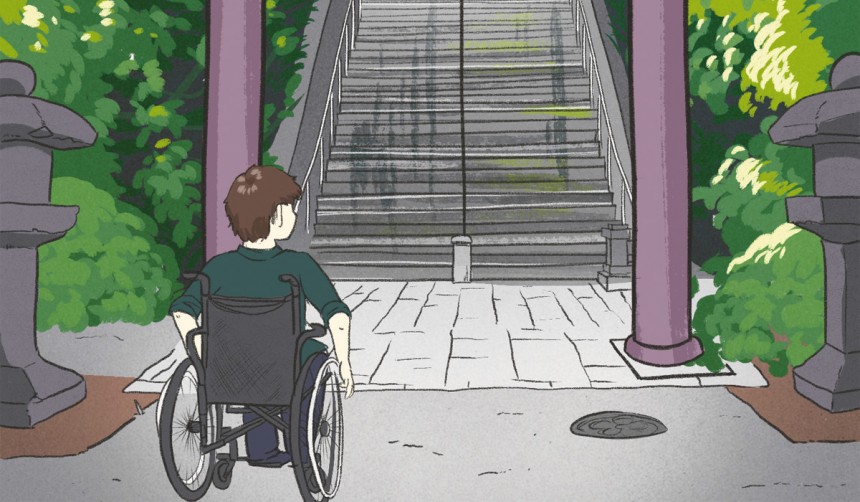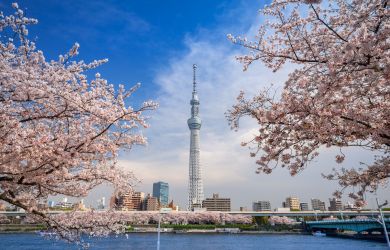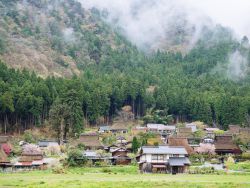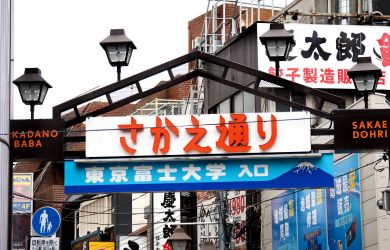
March 20, 2016
Barrier-Free Japan
Finding accessibility in the world’s tightest spaces
Japan is obsessed with barriers. At least it seems that way to me. The names of two of Japan’s central regions, Kanto and Kansai, could be read as “East of the Barrier” and “West of the Barrier.” It’s true that a better translation would be “gate” instead of “barrier”—but nonetheless, the notion of a barrier is certainly implied.
It’s also worth noting that the Japanese word for “disability,” “shōgai,” translates as “obstacle”—so a disabled person, “shōgaisha,” is literally an “obstacle person.” That’s not to say that Japan’s interest in barriers is always negative. Public institutions like to show they have a progressive attitude towards disability, so you will come across a sign that reads “barrier-free,” meaning that the building is accessible.
For the most part, Japan is accessible. Many buildings have escalators and elevators, and in the major cities, the transport system—particularly the trains and subways with their “priority seats” for use by those who are elderly, pregnant, accompanied by children, or disabled—is very good. You will often see a station guard appear with a ramp to help wheelchair users on and off the carriage. As someone who, back in Britain, was denied access on more than one occasion to both buses and trains; for the most part, I admire Japan’s attitude toward transport. In Britain, the denial was on the grounds that there were “too many children and handicapped people.” So, as a physically encumbered man, I really appreciate that, in Japan, I am given “priority.” It’s all good.
Well, it’s mostly good. While Japan in general, and Tokyo in particular, is very accessible to a disabled person, there are still issues. The bad and the ugly, to borrow a phrase. One of the main problems a disabled person might face comes from the lack of space. People back in the country I hail from ask me about culture shock and if there’s anything that disturbs me about Japan. I usually answer in the negative—I have genuinely never really experienced culture shock—but if pushed, I give this response: “Japan appears to understand space differently.” Here, a crowd is seen as inevitable rather than something that can be avoided with careful planning. Whether it be crowded trains at JR Shinjuku Station, arguably one of the busiest train stations in the world; or busy streets such as Shibuya crossing, the famous scramble you see in movies; it’s fair to say that Japan has plenty of rising suns but little space.
Visit a restaurant, whether your favorite fast-food joint or a famous sushi spot, and you’ll find tables placed very close together. Virginia Woolf requested merely a room of one’s own; turns out she was too demanding. In Japan, our ambitions are more modest. Here, it appears that all we require is that little bit of the space-time continuum we currently occupy, with no further leg or elbow room apparently being necessary. Signs on trains often read “Please sit close to each other” so as to allow more passengers. This insistence on using all available space can be troubling if your body is prone to spasm. I find myself longing for a sign that reads, “Please keep a respectful distance.”
It’s perhaps unfair to call this the ugly, but the other issue is the number of staircases you encounter in Japan. The entrances and exits of many temples, shrines, shopping centers, and train stations are often a huge and rather steep staircase. Part of the reason for this is practicality: during typhoons, you really don’t want to be on the ground floor; there’s safety in being higher up. However, it is partly a now-redundant inheritance from ancient times, when the rich and the powerful built monuments to inspire fear and wonder. You may arrive at a metropolitan area station—JR Kanda and JR Harajuku are notable offenders; particularly the latter, being so close to Meiji Shrine—to find few or no escalators and many stairs. Just as London has Big Ben and New York has Times Square, Tokyo demands that we look upon its mighty staircases and despair.





